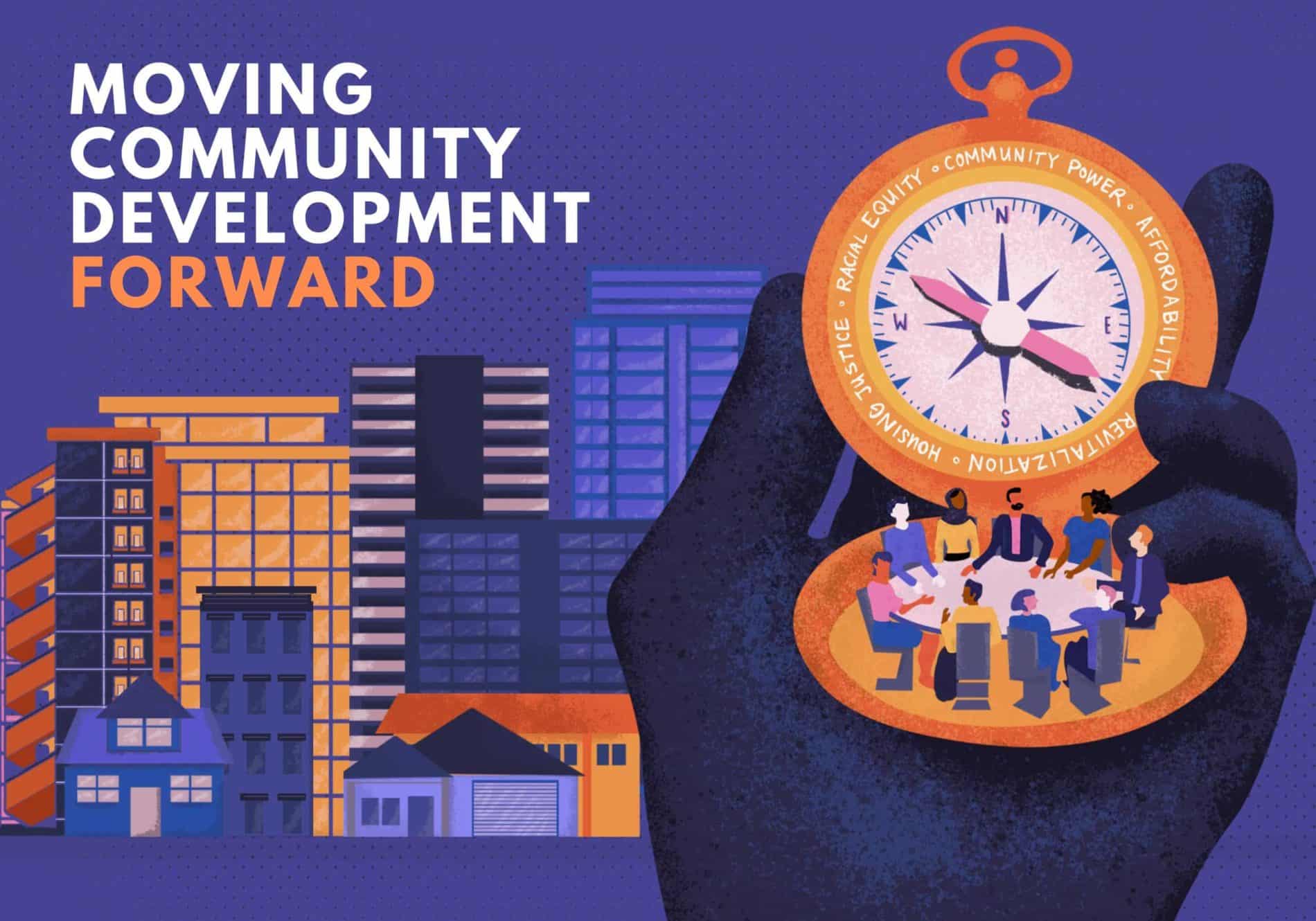
Image by Marco Verch via flickr, CC BY 2.0.
“So, what do you do?”
It’s one of those perfunctory questions I dread. As someone working on homelessness research and technical assistance, I’ve encountered strong opinions on homelessness everywhere I go—from professional networking events to small gatherings with family or friends.
Unfortunately, these opinions rarely track with the evidence I’ve learned after 7+ years in the field.
Often emotionally charged with comments over who deserves what and when, conversations about homelessness with those outside of my field’s bubble can be exhausting, and oftentimes they catch me off guard. As a result, I’ve come to avoid having conversations with people on the topic of homelessness, steering the “so, what do you do?” topic down the vaguest road I can. However, I know that in doing so, I’m missing out on the opportunity to potentially help shift the hearts and minds of people toward evidence-based practices that show people experiencing homelessness in a more dignified, compassionate light than that of the soundbites.
To mitigate the unpreparedness and sense of fatigue I sometimes feel in these situations, I decided to think through the most common responses I get when I tell people I work on homelessness programs. Then, through discussions with others in my field, I compiled conversation techniques and developed ready-to-go replies for each common response, emphasizing empathy and education throughout.
Core Strategies for Having Conversations on Homelessness
When having a conversation about homelessness, there are several techniques that can help steer the conversation in a productive way.
-
Keep it Simple.
When I do try to talk about my work, I tend to get wrapped up in the details of rapid re-housing, homelessness prevention, and coordinated entry. Already placing myself on the defense, I feel compelled to paint a full picture so people who may only know about homelessness from what they see on the streets will understand the complexity of the issue.
However, we live in a world of quick soundbites. Diving into the details can be a fast way to lose someone in all the jargon. Have a simple description of your work ready, and let the person you’re speaking with engage further. One of my colleagues says: “I’m helping nonprofits to help people who are homeless get back into housing as quickly as possible.”
-
Make it personal.
It can be hard for people to fully grasp a social issue that feels so removed from their own lives. There are ways, however, to make it personal. One of my colleagues shared that he has a younger brother who is disabled, but fortunate enough to have supports from employment services and family to meet his basic needs. He humanizes the homelessness issue by recognizing and sharing how without those supports his brother would likely fall into homelessness. We all probably know someone who has either experienced homelessness, or is one mishap away from it.
If you can’t think of an example of a loved one, bring it back to yourself. Think about—and share—how you would feel if you were homeless. What would it be like to lose your sense of freedom and independence trying to navigate the social services system? How would you talk about your situation with your children? What address would you put on your job applications? These questions, when applied to oneself, can help people uncover the many hidden difficulties of homelessness.
-
Use Real-Life Examples.
Storytelling is a powerful way to evoke empathy and understanding around an issue. When I spoke with my colleagues about how they discuss homelessness with people from outside of our field, several brought up stories. One colleague uses story to paint a picture of homelessness that doesn’t fit the stereotype people have of homelessness being linked to drug addiction or mental illness. She talks about a member of her church who grew up in an orphanage. He had a successful career and owned a home in her neighborhood, but went bankrupt after needing heart surgery. Without a family support system on which to rely, he found himself in his 50s, living in his car for several years. It took a lot of time and support from friends before he was finally able to move into senior housing.
I have a story from a case manager in the field I use to highlight why a person who has been chronically homeless may struggle to accept housing after becoming so used to one way of life. This case manager found housing for a veteran who had lived on the streets for many years. However, she found he wasn’t actually staying in the housing, instead returning to the streets. With some conversation and creativity, the case manager decided to set up a tent inside the veteran’s new apartment. It was only then he felt safe enough to come inside and sleep.
-
Affirm the parts of their statement that are true.
No one likes to be told they’re wrong. Finding common ground is a great way to launch a deeper conversation. It may be difficult to find bits of truth within someone’s statement, especially if it’s rooted in stereotypes, but there’s usually something. For example, a person might say, “Homelessness is terrible, but it’s just caused by a bunch of druggies who don’t want jobs, just handouts.” That statement is a harsh generalization. However, it is true that homelessness is a terrible social issue worth addressing. Affirm that truth in the person’s statement, and then expand.
-
Emphasize the positives.
Conversations about homelessness can quickly turn into a dialogue about how bad everything is and how nothing will ever get better. However, focusing on the negatives doesn’t drive the conversation forward. Many positive efforts are happening to prevent and end homelessness. Sometimes I’ll share with people that several states and cities—such as Virginia or Atlanta—have actually ended veteran homelessness. This surprises many people and sparks important conversation on what interventions work and how they can support those efforts.
Sample Responses for Frequent Conversation Topics
The core conversation strategies above are good for driving dialogue forward, but it’s also helpful to have a few stock responses up your sleeve. Below are some examples of how you can use these strategies to quickly respond to some of the most common conversation topics around homelessness.
- Comment: I don’t get it. If they wanted to go inside, there are plenty of shelters and resources they can access. And if they’re not willing to get sober to go inside, then they’re choosing to stay out in the cold.
Response: While some communities have shelter resources available, not all do, especially in more rural or suburban areas. As you’ve mentioned, many also have strict rules around things like sobriety. Addiction is an illness, so it’s not as simple as just stopping. Shelters with lower barriers to entry and a focus on harm reduction for clients are really important for helping folks get back on their feet.
- Comment: You know, a lot of people are homeless by choice. They choose that lifestyle. They’d rather rely on these social programs than get a job and work for their housing.
Response: It’s true that many people experiencing homelessness might feel averse to entering shelter. People who have lived outside for a long time have developed a sense of community there, know who will have their back, and can easily escape if trouble arises. Being in a shelter with strangers can feel threatening for some. Others try to avoid perceived judgment from shelter staff, as they’re already feeling vulnerable.
However, while many might choose to not enter shelter, most are motivated to find housing and just need support to help them get there and regain their independence. This is important because of how dangerous remaining on the streets is both from a health and safety perspective.
- Comment: I can’t have sympathy for someone who is homeless, but has an SUV. Learn how to have priorities!
Response: Sometimes a car is the only thing people have left. They use it as a shelter and as a way to get to work or wherever they need to go. If someone owns their car, it can be a real lifeline for them in regaining stability.
- Comment: If you’re not going to get a job, why should you be given housing and all of these benefits for free? I work hard for what I have.
Response: Trying to find a job when you don’t have housing is really hard. You have to figure out what address you can put on a resume, how you’re going to get a shower in before your interview, how to pay for the transportation to get there, and many other little details we often take for granted. Providing housing to an individual gives them an opportunity to move out of immediate survival mode and be able to focus on obtaining employment.
Still, many experiencing homelessness actually do have jobs, but leaving homelessness can be nearly impossible without assistance. They often have to save up thousands of dollars to pay for application fees, security deposits, and first and last months’ rent. They also have to pass landlord screening tests and interviews. Support during this process is critical to success.
- Comment: Why don’t people just move somewhere they can afford?
Response: Housing affordability is a big component in ending homelessness. However, a lot of the more affordable housing is also farther away from the jobs and support networks we all need to be successful, and most of us take for granted. They can end up homeless again paying for high transportation costs back and forth to where they’re able to find work. It can also be traumatizing to be priced out of your own hometown.
- Comment: The main issue is drug and alcohol abuse, and I’m not going to give my money to someone to fuel that bad habit.
Response: Panhandling is a tough issue. It’s really uncomfortable to be confronted with profound poverty. Whether you choose to give to someone or not is a personal choice. Either way, if you encounter someone asking for money on the streets, kindness goes a long way. Giving him a smile, looking him in the eye, and listening to what he has to say can be the most human interaction he’ll receive that day. It can also help to know of resources within your community to which you can direct him.
- Comment: Mental health is the biggest issue. That’s why so many people are homeless.
Response: There are certainly people who are experiencing homelessness that also have a mental health disorder, but there are also a lot of people with mental health disorders who have never been and never will be homeless. Most people, both those with and without mental health disorders, lose their housing because they can’t afford their rent. They’re likely paying over half of their income for housing. If they face a financial crisis, it’s enough to fall behind on rent and cause an eviction. Many will try to double-up with family or friends, but eventually run out of willing hosts. Mental health supports are a definite need in communities, but the biggest issue for homelessness is stagnant wages and rising rents.
I hope that practitioners across the homeless services field can use these conversation strategies and standard responses to prepare for conversations about homelessness—whether with their loved ones, or total strangers. With preparation instead of avoidance, we may be able to change a viewpoint or two and expand public support for programs that work.





Comments